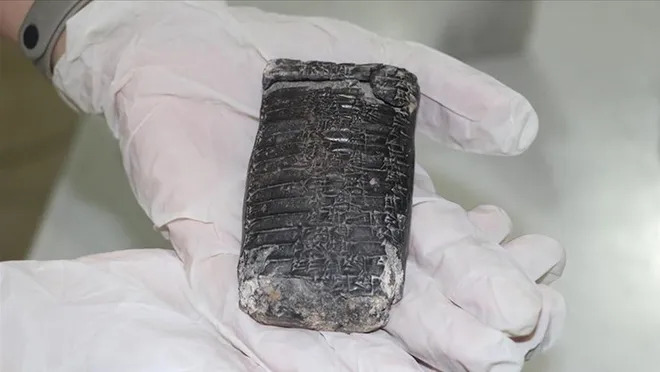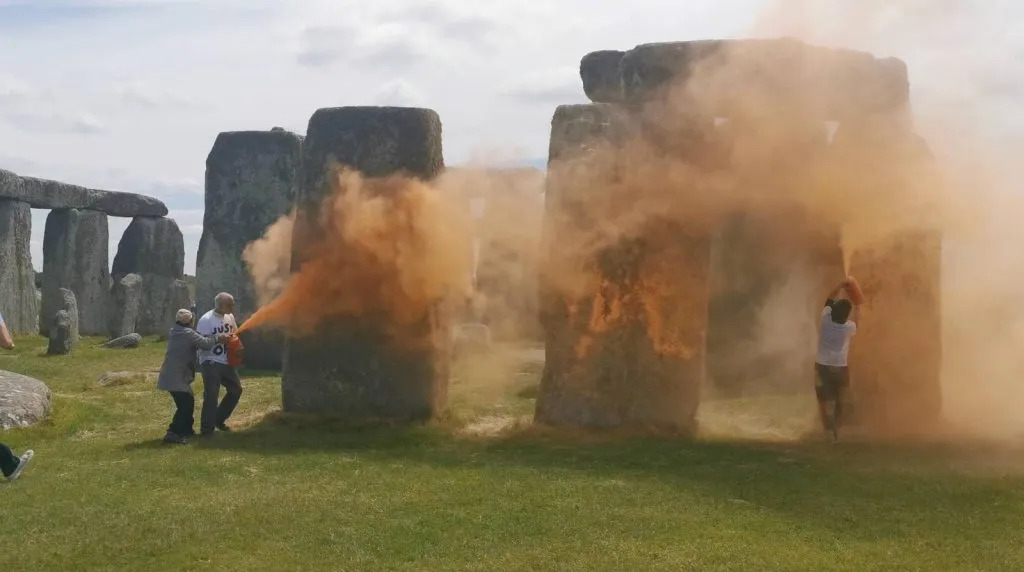A Japanese archeologist-led team has unearthed a 3,300-year-old tablet from the Hittite Empire, providing new insights into ancient religious ceremonies and foreign relations.
Found at the Büklükale excavation site in the Karakeçili district of Kırıkkale, the tablet mentions the Arzava king Tarhuntarado, illuminating the diplomatic and cultural exchanges of the era.
The Japanese Institute of Anatolian Archaeology has been excavating the site for 15 years, exploring both the “Lower City” and the “Upper City,” and revealing thousands of years of history. The aim of this work is to investigate a regional city in the 2nd millennium B.C., especially during the Hittite Imperial Age, and to fill the gap in the Central Anatolian chronology identified at Kaman – Kalehöyük.
The cuneiform clay tablet, written in Hittite and Hurrian, describes the religious practices of the Hittite royal family. Kimiyoshi Matsumura, leading the excavation, emphasized the tablet’s significance, noting that it refers to a disastrous foreign invasion of the Hittite Empire and mentions King Tarhuntarado, whose name has previously been found on tablets in Amarna, Egypt.
“This discovery in Büklükale indicates the area was a strategically important city of the Hittite Empire,” Matsumura stated. The connection to Amarna further highlights the tablet’s historical importance.
Matsumura shared that the tablet’s references to Hurrian religious ceremonies suggest that the Hittite king and queen likely performed these rituals, indicating a period of cultural integration or influence. “The discovery of the Hurrian tablet shows that the Hittite king and queen came and performed religious ceremonies here in Hurrian. It is certain that they came here. Maybe they may have resided here for a while, but we don’t know exactly.”
“This Hurrian connection was also found in three other Anatolian sites: Boğazköy, Ortaköy [Çorum], and Kayalıpınar [Sivas]. We know for sure that the Hittite royal family lived in these places.”
The presence of a Hurrian-written tablet in Büklükale strengthens the theory of its significance to the Hittite royal family. “It is not clear what kind of city Büklükale was, but it must have been one of the most important settlements,” Matsumura said.
One of the tablet’s most intriguing aspects is its mention of a city named Katapa, a location yet to be discovered. “How to pray is written in Hittite, and prayer texts are written in Hurrian. It is not yet clear why the name Katapa appeared in Büklükale. Why was this prayer, which should have been performed in Katapa, found in Büklükale? The great mystery of this city and its connection to the prayer text in Hurrian needs to be solved,” Matsumura stated.
Additionally, the tablet contains personal names, including the Arzava king Tarhuntarado, whose name appears in both the newly found tablet and the letters from Amarna in the 1890s, linking the two regions. Matsumura pointed out that the Amarna letters, written by Amenhotep III, mention the invasion of Boğazköy by Tarhuntarado.
“The city of Amarna was the capital built by Amenhotep IV, the father of the world-famous Akhenaten. Inside the tablet found there was a letter sent by Amenhotep III, the father of Amenhotep IV, to the Arzava king Tarhuntarado. In that letter, he says that Boğazköy had been invaded.”
“This shows that there were attempts to strengthen relations with the Arzava king through diplomatic marriage. It is very surprising that the name of the king mentioned in such a big event is found in Büklükale,” he said.
Previous discoveries at the Büklükale excavation site include a 3,000-person ritual and ceremony area in 2021 and signs of an earthquake during the Hittite period in 2023.







